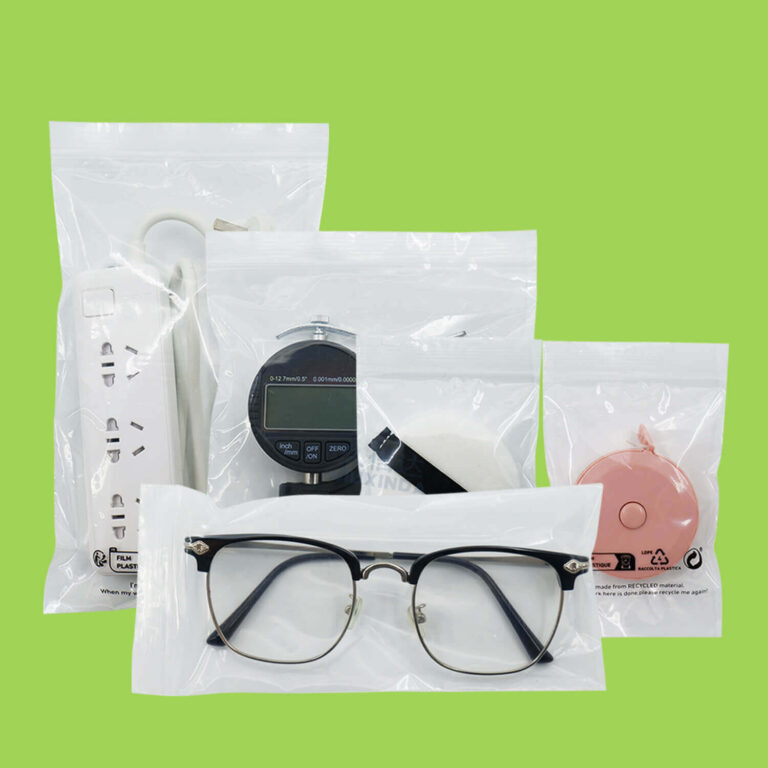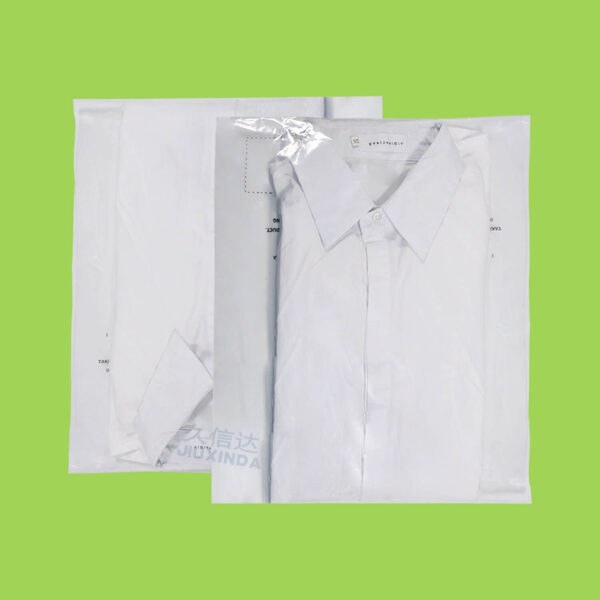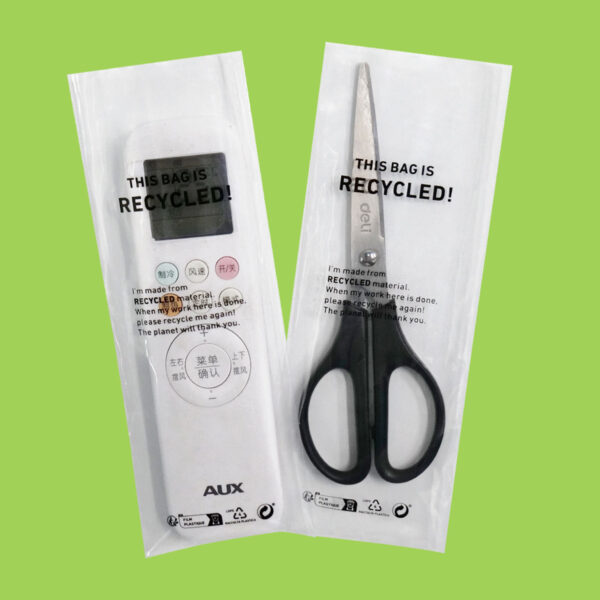In today’s society, with the growing awareness of environmental protection, sustainable development has become the focus of global attention. Among the many environmental protection measures, the changes in the packaging industry are particularly noteworthy. PCR packaging, as an emerging environmentally friendly packaging solution, is gradually coming into the public’s field of vision. This article will discuss the definition, advantages, application scenarios and future development trends of PCR packaging to help readers fully understand this innovative packaging concept.
Contents
I. Definition of PCR packaging
PCR stands for “Post – Consumer Recycled”. Therefore, PCR packaging refers to packaging made from post-consumer recycled materials. These materials usually come from products that are discarded by consumers after use, such as plastic bottles, food containers, and electronics housings. After a series of complex recycling procedures, such as collection, sorting, cleaning, processing, etc., these discarded items are remade into new packaging materials, which are used to produce a variety of packaging products.

II. Advantages of PCR packaging
(i) Environmental benefits
1. Reducing landfills and incineration: Traditional plastic packaging is mostly discarded after use and ends up in landfills or incinerated. Landfill will take up a lot of land resources, while incineration will produce harmful gases, causing serious pollution to the air. the emergence of PCR packaging, so that these discarded plastics can be reused, reducing the number of landfills and incineration, thereby reducing the negative impact on the environment.
2.Reduced dependence on natural resources: The production of new plastic packaging requires the consumption of large amounts of non-renewable resources such as oil. The raw materials of PCR packaging, however, come from recycled plastics, reducing the need for new plastics, which in turn reduces the exploitation and consumption of natural resources. This helps to alleviate the problem of resource shortage and achieve sustainable utilization of resources.
(ii) Economic advantages
1. Reduce costs: As environmental regulations become more stringent, companies are facing higher and higher environmental costs. The use of PCR packaging can reduce the enterprise’s raw material procurement costs, because the price of recycled plastics is usually lower than that of new plastics. In addition, the use of PCR packaging can also reduce the company’s expenditure on waste disposal, thereby improving the economic efficiency of enterprises.
2.Enhancement of corporate image: In today’s era when consumers are more and more concerned about environmental protection, the adoption of PCR packaging by enterprises can demonstrate their commitment and sense of responsibility to environmental protection. This helps to enhance the social image of the enterprise and strengthens consumers’ sense of identity and loyalty to the brand. Consumers are more willing to choose the products of those companies that pay attention to environmental protection, thus bringing more market share and economic gains for the enterprise.
(iii) Quality advantages
1.Stable performance: modern recycling technology has been very mature, can be recycled plastic processing into stable performance of packaging materials. PCR packaging in terms of strength, durability, sealing and other aspects of the traditional packaging materials is no less than, can fully meet the packaging needs of a variety of products.
2.Strong customizability: PCR packaging can be customized according to different product needs, including shape, size, color and other aspects. Enterprises can design unique PCR packaging according to the characteristics of the product and brand image to improve the competitiveness of the product in the market.
III. Application Scenarios of PCR Packaging
(i) Food and beverage industry
1. Beverage bottles: Many beverage companies have started using PCR plastic bottles to package their products. Not only are these bottles environmentally friendly, but they are virtually indistinguishable from traditional plastic bottles in appearance and performance. Consumers can hardly notice that they are made of recycled materials when they buy beverages. For example, Coca-Cola has already introduced beverage bottles containing a certain percentage of PCR materials and plans to further increase the percentage of PCR materials used in the future.
2. Food packaging boxes: PCR packaging has also been widely used in food packaging boxes. For example, some fast food restaurants have begun to use PCR materials for their burger boxes and French fries boxes. These boxes can not only protect the quality of food, but also reduce the pollution of the environment. In addition, some high-end food brands have also adopted PCR boxes to package their products to demonstrate their emphasis on environmental protection.
(ii) Electronics industry
1. Electronic product shell: in the shell manufacturing of electronic products, PCR packaging materials are also gradually emerging. For example, some computer host shell, monitor shell, cell phone shell has begun to use PCR plastic. These shells not only have a good appearance and performance, but also reduces the need for new plastics. At the same time, the use of PCR materials in the shell of electronic products in the recycling is also more convenient, further improving the sustainability of electronic products.
2. Packaging boxes for electronic products: In addition to the shells of electronic products, their packaging boxes are also an important application area for PCR packaging. Many electronic product brands prioritize PCR materials when designing packaging boxes. These boxes not only protect the safety of electronic products during transportation and storage, but also reduce the pollution of the environment. In addition, some brands also marked on the box “using PCR materials” to show consumers its environmental protection concept.
(iii) Daily chemicals industry
1. Cosmetic packaging: the cosmetic industry has very high requirements for packaging, which should not only be beautiful but also safe and reliable. PCR packaging materials are also more and more widely used in cosmetic packaging. For example, some cosmetic bottles, lipstick tubes and eye shadow cases have started to use PCR materials. These packages not only have good appearance and performance, but also reduce the pollution of the environment. At the same time, cosmetic packaging using PCR materials also meets consumer demand for environmentally friendly cosmetics.
2. Toiletries packaging: PCR packaging has also been widely used in the packaging of toiletries. For example, some shampoo bottles, shower gel bottles, toothpaste tubes, etc. have begun to use PCR materials. These packages can not only protect the quality of the product, but also reduce the pollution of the environment. In addition, some brands have also labeled their packaging with the words “using PCR material” to show consumers their environmental protection concept.

IV. Status and Challenges of the Development of PCR Packaging
(i) Status of development
1. Policy support: Many countries and regions have introduced a series of policies to encourage enterprises to use PCR packaging. For example, the European Union has formulated strict packaging regulations, requiring enterprises to gradually increase the proportion of recycled materials used in packaging materials. Some states in the United States have also introduced similar regulations to promote the development of PCR packaging. These policies provide strong support and guarantee for enterprises to adopt PCR packaging.
2. Market demand growth: With the continuous improvement of consumers’ environmental awareness, the market demand for PCR packaging is also growing rapidly. Consumers are more and more inclined to choose environmentally friendly products, which prompts enterprises to increase investment in PCR packaging. Many well-known brands have begun to use PCR materials in their product packaging, and has been recognized and supported by consumers.
3. Technological innovation: In recent years, there has been continuous technological innovation in PCR packaging. New recycling technologies can process recycled plastics into packaging materials with better performance to meet the needs of various products. At the same time, some companies are also developing new PCR packaging designs to improve the aesthetics and practicality of packaging. These technological innovations provide a strong impetus for the development of PCR packaging.
(ii) Challenges
1. Inadequate recycling system: Despite the many advantages of PCR packaging, the current global recycling system is still inadequate. Many areas have insufficient recycling facilities and low recycling efficiency, resulting in a large number of waste plastics can not be effectively recycled. This not only affects the supply of raw materials for PCR packaging, but also limits its further development.
2. Insufficient consumer awareness: Although consumers’ concern for environmental protection is increasing, some consumers still have insufficient awareness of PCR packaging. Some consumers believe that the quality of PCR packaging is not as good as traditional packaging, or worry about its safety. This cognitive misunderstanding will affect consumer acceptance of PCR packaging products, thus hindering the market promotion of PCR packaging.
3. Cost issues: Although the use of PCR materials can reduce the cost of raw material procurement for enterprises, a certain amount of investment is still required in the recycling and processing process. For example, the collection, sorting and cleaning of recycled plastics require specialized equipment and technology, which increases the production costs of enterprises. In addition, the design and development of PCR packaging also requires a certain amount of investment, which may also affect the enthusiasm of enterprises to adopt PCR packaging.

V. Future Development Trends of PCR Packaging
(i) Technological innovation to promote PCR packaging upgrade
1. Research and development of high-performance materials: In the future, with the continuous progress of science and technology, the performance of PCR packaging materials will continue to improve. Researchers will work to develop lighter, stronger and more durable PCR materials to meet the needs of different products. For example, by improving the recycling process and adding special additives, the strength and toughness of PCR materials can be improved so that they can be used in a wider range of applications.
2. Intelligent packaging design: In addition to performance enhancement, PCR packaging will also develop in the direction of intelligence. For example, some companies are developing PCR packaging with sensors, which can monitor the product temperature, humidity, shelf life and other information in real time. This intelligent packaging can not only improve product safety, but also provide consumers with a better experience.
(ii) Improvements and innovations in recycling systems
1. Upgrading of recycling facilities: In order to meet the development needs of PCR packaging, recycling facilities will be continuously upgraded and improved in the future. The government and enterprises will increase investment in recycling facilities, build more recycling stations and processing plants, and improve recycling efficiency. Meanwhile, advanced recycling technologies and equipment will be widely used, such as automated sorting equipment and efficient cleaning systems, to improve the quality and utilization of recycled plastics.
2. Innovation in recycling models: In addition to traditional recycling models, more innovative recycling models will emerge in the future. For example, some enterprises have begun to try to cooperate with consumers to carry out “trade-in” activities, encouraging consumers to return discarded plastic packaging to enterprises. In addition, some communities are also exploring the establishment of “plastic bank”, residents can deposit waste plastic into the bank, in exchange for certain incentives or concessions, thereby increasing the enthusiasm of residents to recycle.
(iii) Market development and consumer education
1. Market Expansion: With the continuous maturity of PCR packaging technology and cost reduction, its market application will continue to expand. In addition to the current common food and beverage, electronic products, daily necessities and other fields, the future PCR packaging will also be expanded to more industries, such as pharmaceuticals, automotive, construction and so on. For example, in the pharmaceutical industry, PCR packaging can be used for drug boxes, syringe packaging, etc.; in the automotive industry, PCR materials can be used for automotive interiors, parts and components packaging.
2. Consumer education: In order to increase consumer awareness and acceptance of PCR packaging, consumer education will be strengthened in the future. The government, enterprises and environmental organizations will popularize the knowledge and advantages of PCR packaging to consumers through various channels, such as advertising, community activities and school education. At the same time, companies can label detailed information about PCR materials on product packaging, so that consumers can better understand the environmental attributes of the product, thus promoting the purchase of PCR packaging products.
VI. Conclusion
PCR packaging, as an environmentally friendly, economical and efficient packaging solution, is gradually changing the landscape of the packaging industry. It not only helps to reduce landfills and incineration and reduce dependence on natural resources, but also reduces production costs and improves the social image of enterprises. Although PCR packaging is still facing some challenges, such as imperfect recycling system, lack of consumer awareness, etc., with technological innovation, policy support and market expansion, its future development prospects are very broad. We have reason to believe that in the near future, PCR packaging will become the mainstream choice of the packaging industry, making an important contribution to the realization of sustainable development goals.

